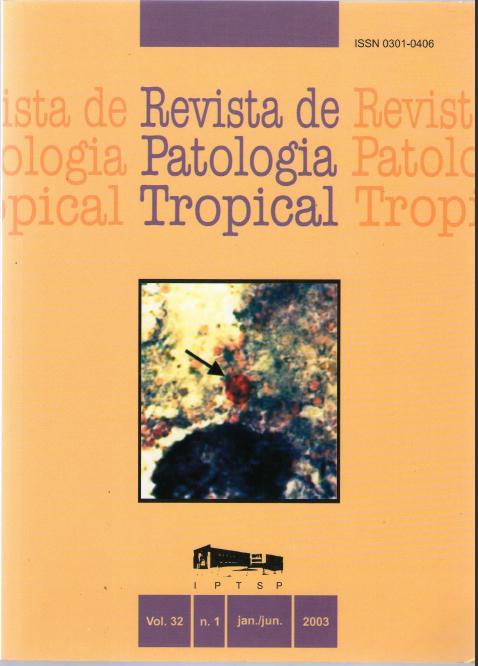A TEN YEAR (1990-1999) SURVEY ON LEISHMANIASIS INCIDENCE IN PERNAMBUCO STATE, NORTHEASTERN BRAZIL
DOI:
https://doi.org/10.5216/rpt.v32i1.4351Resumo
Diseases caused by Leishmania parasites are relatively common in rural arcas in Brazil. However, studies on eco-epidemiological aspects of the disease and its vectors, Lutzomyia species (Diptera: Psychodidae), are scarce. We studied the leishmaniasis incidence from January 1990 to December 1999 in the State of Pernambuco, Northeastem Brazil. Based on data collected by the FundaçAo Nacional de Saúde, the profile of infected people, in terms of age, sex and occupation was investigated. The pliysiogeographical aspects of disease incidence were also considered. A total of 7,616 cases were recorded, of which 82.8% were cutaneous and 17.2% were visceral leishmaniasis. A higher incidence of disease was observed among men, and areas with remnants of rainforest had higher rates of infection. Children and early teenagers had a higher percentage of infection, as had adults involved in agricultural activities. Changes in vegetation composition and abundance, associatcd with an adaptative behavior by female mosquito vectors, may have contributed to an increase of leishmaniasis incidence in urban areas.Downloads
Downloads
Publicado
Como Citar
Edição
Seção
Licença
The manuscript submission must be accompanied by a letter signed by all authors stating their full name and email address, confirming that the manuscript or part of it has not been published or is under consideration for publication elsewhere, and agreeing to transfer copyright in all media and formats for Journal of Tropical Pathology.

